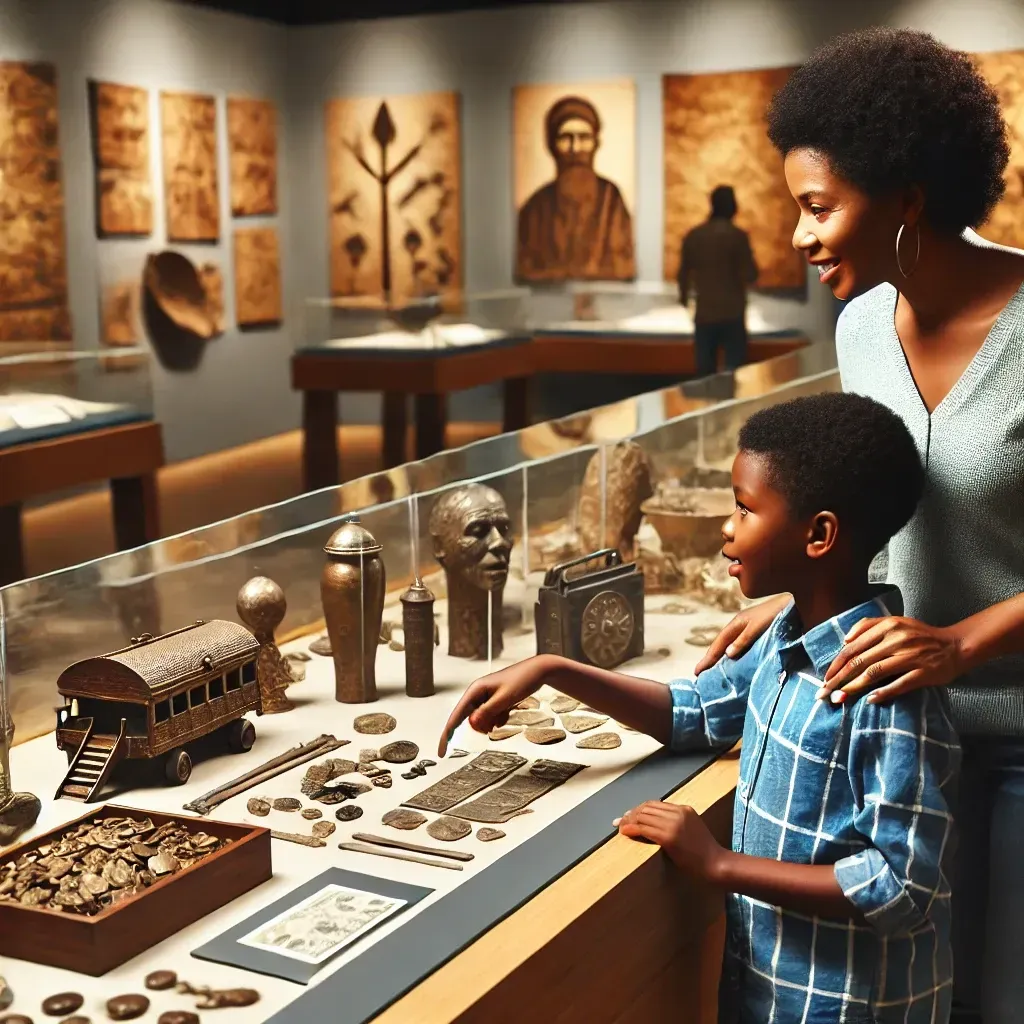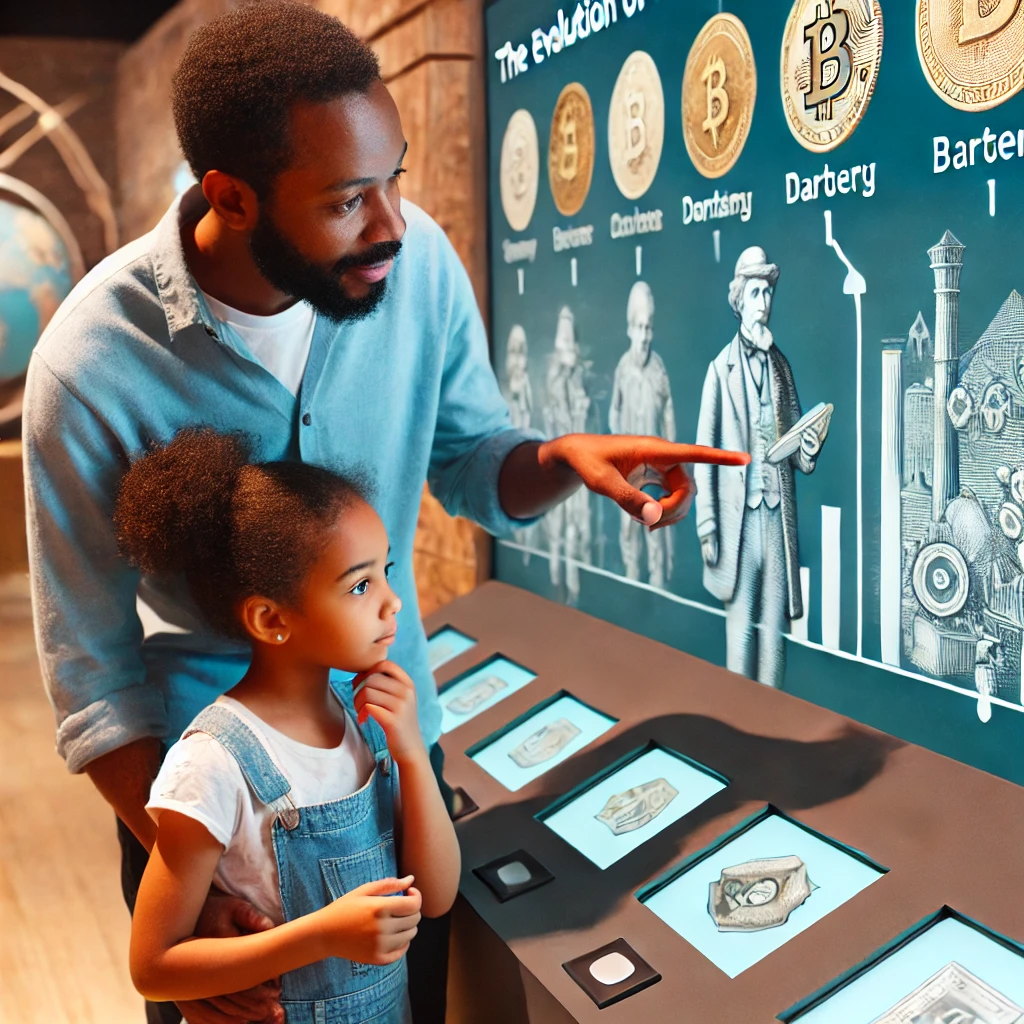
The Great Depression & Hyperinflation: What Kids Should Know About Economic Crises
Imagine waking up one day to find out that the money in your piggy bank can’t buy anything because prices have skyrocketed. Or imagine that millions of people lose their jobs all at once because businesses are shutting down.
This might sound scary, but these events actually happened in history during times like the Great Depression and periods of hyperinflation in different countries.
But what exactly are economic crises? Why do they happen? And what can we learn from them so we can be better prepared for the future?

✅ Discover what caused the Great Depression and hyperinflation.
✅ Learn how economic crises affect people’s jobs, savings, and prices.
✅ Understand how governments and families can prepare for tough times.
Let’s dive into history and explore how economic crises have shaped the world!
1. The Great Depression: When the World’s Economy Collapsed
📌 What Was the Great Depression?
The Great Depression (1929-1939) was one of the worst financial crises in history. It started in the United States but quickly spread across the world.
💰 What Happened?
✔ Stock Market Crash of 1929 – People lost billions of dollars when stock prices suddenly collapsed.
✔ Banks Failed – Many banks didn’t have enough money to give back to customers.
✔ Businesses Shut Down – Without money, companies had to lay off workers, causing high unemployment.
✔ Families Struggled – Many people lost their homes and couldn’t afford food.
📍 Example:
In 1933, nearly 25% of Americans (1 in 4 people) were out of work, leading to long food lines and homelessness.
💡 Why This Was Important:
The Great Depression showed how an economic collapse could impact millions of people.
2. What Caused the Great Depression?
📌 Main Causes of the Great Depression:
1️⃣ The Stock Market Crash (1929) – Investors borrowed too much money to buy stocks, and when prices dropped, they couldn’t pay back their loans.
2️⃣ Bank Failures – Banks gave out risky loans, and when businesses failed, they lost money.
3️⃣ Declining Consumer Spending – With no jobs, people stopped spending money, causing businesses to struggle.
4️⃣ Drought & Dust Bowl – Farmers in the U.S. lost their crops, making food expensive and scarce.
📍 Example:
A factory worker in 1929 could have lost his job, and without unemployment benefits, his family had no way to pay for rent or food.
💡 What We Can Learn:
It’s important to save money and not rely too much on debt, because economic crashes can happen unexpectedly.
3. Hyperinflation: When Money Becomes Worthless
📌 What is Hyperinflation?
Hyperinflation happens when prices of goods rise so fast that money loses its value.
💰 What Happens During Hyperinflation?
✔ A loaf of bread that costs $1 today could cost $1,000 next month!
✔ People need wheelbarrows full of cash just to buy groceries.
✔ Savings become worthless because money loses value too fast.
📍 Example:
In Germany (1923), Venezuela (2016), and Zimbabwe (2008), hyperinflation made their national currencies almost useless.
💡 Why This Matters:
Understanding hyperinflation teaches kids why keeping money in strong currencies and assets (like gold or real estate) is important.
4. The Worst Cases of Hyperinflation in History
📌 Three Famous Hyperinflation Crises:
✅ Germany’s Hyperinflation (1923)
After World War I, Germany had to pay huge debts.
The government printed too much money, making prices skyrocket.
People needed buckets of cash just to buy food.
📍 Example:
A loaf of bread that cost 1 mark in 1922 cost 200 billion marks in 1923!
✅ Zimbabwe’s Hyperinflation (2008)
The government printed too much money, causing prices to double every few hours.
The Zimbabwean dollar became worthless, and people switched to U.S. dollars and gold.
📍 Example:
A single egg cost 50 billion Zimbabwean dollars!
✅ Venezuela’s Hyperinflation (2016-Present)
Falling oil prices and poor economic policies caused Venezuela’s currency to lose value rapidly.
Families couldn’t afford basic food and medicine.
📍 Example:
A chicken cost 14 million Venezuelan bolívars in 2018!
💡 Lesson:
Too much money printing without real economic growth leads to disaster.
5. How Economic Crises Affect Families
📌 What Happens to Families During Economic Crises?
❌ Job Losses – Parents may struggle to find work.
❌ Higher Prices – Everyday goods become expensive.
❌ Lost Savings – Money in the bank may lose value.
❌ More Debt – Families may take loans they can’t repay.
📍 Example:
During the Great Depression, families stood in long lines for food because they couldn’t afford groceries.
💡 What Families Can Do to Prepare:
✔ Save money for emergencies.
✔ Invest in assets that hold value (like real estate and gold).
✔ Learn financial skills to make smart money decisions.
6. How Governments Try to Fix Economic Crises
📌 Ways Governments Respond to Economic Crises:
✔ Control Inflation – Stop printing too much money.
✔ Create Jobs – Build projects to give people work.
✔ Help Families – Provide unemployment benefits and food aid.
✔ Regulate Banks – Prevent risky financial behavior.
📍 Example:
The U.S. created Social Security and minimum wage laws after the Great Depression.
💡 Why This Matters:
Governments play a big role in fixing economies, but people must also learn to manage money wisely.
7. What Kids Can Learn About Economic Crises
📌 Key Lessons for Kids:
✔ Money loses value if too much is printed.
✔ Saving and investing wisely can protect against financial hardships.
✔ Economic crises affect everyone, but smart decisions can help families prepare.
📍 Example:
If a child saves their allowance instead of spending it all, they’ll have money for future needs—just like families should during economic uncertainty.
💡 Why Learning About Money Matters:
Understanding the past helps us prepare for the future.
Conclusion: Learning from History to Prepare for the Future
The Great Depression and hyperinflation were tough economic disasters, but they taught the world important financial lessons.
✅ The Great Depression showed how a financial collapse could impact jobs, families, and entire economies.
✅ Hyperinflation proved that printing too much money makes it worthless.
✅ Learning to save, invest, and spend wisely can protect families from financial hardships.
And the best part? Your child can start learning about money today!
🚀 Download Jasiah’s Money Adventure – Instant Digital eBook! 🚀
📚 Fun and engaging lessons on money, saving, and investing!
💰 Perfect for teaching kids about inflation, economic history, and financial literacy!
💡 Includes interactive activities and real-world money lessons!
👉 Click here to get your instant digital download now!
🔗 www.childrentowealth.com/product-details/product/jasiahsmoney
Give your child the gift of financial knowledge—start today! 🚀💰
